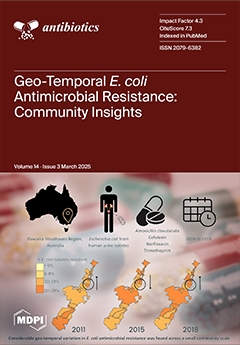Background: The increased rates of common fungal diseases are a constant challenge. Therefore, the search for plant-based compounds with antifungal activity, particularly ones against
Candida species, is always relevant in the medical context. However, most of the studies have focused on screening the
[...] Read more.
Background: The increased rates of common fungal diseases are a constant challenge. Therefore, the search for plant-based compounds with antifungal activity, particularly ones against
Candida species, is always relevant in the medical context. However, most of the studies have focused on screening the antifungal activity of extracts rather than isolated compounds. Based on this, we aimed to analyze and organize a comprehensive overview of the antifungal and other biological activities of isolated compounds found in Anacardiaceae family vegetal species, covering mechanisms of action and potential therapeutic applications.
Results: The extracts, essential oils, and compounds are frequently assayed for anti-
Candida activity using the in vitro minimum inhibitory concentration (MIC), minimum fungicide concentration (MFC), and halo inhibition assays.
Candida albicans,
C. tropicalis,
C. parapsilosis,
C. glabrata,
C. krusei, and
C. guilliermondii were the most tested fungus species. Essential oils were the most used form (37% of the studies). The isolated compounds included shikimic acid, 2-hydroxy-1,8-cineole β-D-glucopyranoside, myricitrin, cardanol, estragole, trans-anethole, β-caryophyllene, myrcene, catechin-3-O-rhamnoside,
β-sitosterol-3-O-glucoside, 24Z-isomasticadienolic acid, oleanolic acid, pistagremic acid, apigenin, sakuranetin, oleanolic aldehyde, and integriside.
Conclusions: Our data indicate that the compounds isolated from Anacardiaceae species show promise for developing new therapeutic antifungal drugs, mainly if we consider their other biological activities, including anti-inflammatory, antioxidant, and apoptotic effects. In this context, they may be candidates for future treatments of fungal infections, especially in combination with conventional antifungals or when used in nanostructured formulations, which may result in a new avenue of using plant extracts and isolated compounds.
Full article






